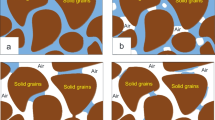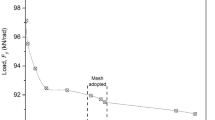Abstract
Purpose
Overturning on uneven and sloped surfaces is an important issue during the operation of agricultural field machinery. In this study, the geometrical (size and location) parameters of a pepper transplanter under development were optimized by theoretical overturning analysis to maintain stability during the operation.
Methods
A walking-type transplanter was designed to transplant pepper seedlings in a two-row cultivation pattern so that the transplanting could be completed using three primary mechanisms for seeding, i.e., supply, picking, and dibbling. The four-wheel transplanter was designed to work with three different forward speeds (i.e., 0.3 m/s, 0.65 m/s, and 1.3 m/s). Mathematical and 3-D models were constructed both for static and dynamic conditions, and simulation was performed using a commercial software package to minimize the overturning tendency of the transplanter.
Results
Considering the plant ridge height and width, the track width and wheelbase of the transplanter were determined to be 725 mm and 680 mm, respectively. The positions of the mechanisms were optimized to maintain the center of gravity (CG) of the transplanter in the middle point of the stability area with a 436.26 mm height from the ground. During the static analysis, the transplanter was overturned laterally and longitudinally at slope angles of 40.67° and 36.26°, respectively. The transplanter overturned when the angles exceeded 29.3° for uphill and 49° for downhill paths, respectively, at the maximum forward speed (1.3 m/s) during dynamic analysis. Also, lateral overturning occurred while one wheel was exposed to obstacles with heights greater than 245 mm at the maximum operating speed.
Conclusions
The results of this study would be helpful for designing the layout of the transplanter and the field test of the prototype.











Similar content being viewed by others
References
Abubakar, M. S. A., Ahmad, D., & Akande, F. B. (2010). A review of farm tractor overturning accidents and safety. Pertanika Journal of Science and Technology, 18(2), 377–385 Retrieved from http://psasir.upm.edu.my/id/eprint/10395/1/27.pdf
Abu-Hamdeh, N. H., & Al-Jalil, H. F. (2004). Computer simulation of stability and control of tractor-trailed implement combinations under different operating conditions. Bragantia, 63(1), 149–162. https://doi.org/10.1590/S0006-87052004000100015
Ahmadi, I. (2011). Dynamics of tractor lateral overturn on slopes under the influence of position disturbances (model development). Journal of Terramechanics, 48(5), 339–346. https://doi.org/10.1016/j.jterra.2011.07.001
Ayers, P., Conger, J., Comer, R., & Troutt, P. (2018). Stability analysis of agricultural off-road vehicles. Journal of Agricultural Safety and Health, 24(3), 167–182. https://doi.org/10.13031/jash.12889
Baenas, N., Belović, M., Ilic, N., Moreno, D. A., & García-Viguera, C. (2019). Industrial use of pepper (Capsicum annum L.) derived products: Technological benefits and biological advantages. Food Chemistry, 274, 872–885. https://doi.org/10.1016/j.foodchem.2018.09.047
Baker, V., & Guzzomi, A. L. (2013). A model and comparison of 4-wheel-drive fixed-chassis tractor rollover during Phase I. Biosystems Engineering, 116(2), 179–189. https://doi.org/10.1016/j.biosystemseng.2013.07.016
Bechar, A., & Vigneault, C. (2016). Agricultural robots for field operations: Concepts and components. Biosystems Engineering, 149, 94–111. https://doi.org/10.1016/j.biosystemseng.2016.06.014
Bietresato, M., & Mazzetto, F. (2019). Definition of the layout for a new facility to test the static and dynamic stability of agricultural vehicles operating on sloping grounds. Applied Sciences, 9(19), 4135. https://doi.org/10.3390/app9194135
Capacci, E., Franceschetti, B., Ciuffoli, A., & Rondelli, V. (2017). The stability of self-propelled sprayers according to the ISO 16231 standardized procedure. Chemical Engineering Transactions, 58, 61–66. https://doi.org/10.3303/CET1758011
Chopan, M., & Littenberg, B. (2017). The association of hot red chili pepper consumption and mortality: A large population-based cohort study. PLoS One, 12(1), e0169876. https://doi.org/10.1371/journal.pone.0169876
Chowdhury, M., Islam, M. N., Iqbal, M. Z., Islam, S., Lee, D. H., Kim, D. G., Jun, H. J., & Chung, S. O. (2020). Analysis of overturning and vibration during field operation of a tractor-mounted 4-row radish collector toward ensuring user safety. Machines, 8(4), 1–14. https://doi.org/10.3390/machines8040077
Demšar, I., Bernik, R., & Duhovnik, J. (2012). A mathematical model and numerical simulation of the static stability of a tractor. Agriculturae Conspectus Scientificus, 77(3), 143–150 https://hrcak.srce.hr/89912
Deng, Y., Zhao, Y., Xu, H., Lin, F., & Wang, Q. (2020). Rigid-flexible coupling modelling and dynamic performance analysis of novel flexible road wheel. In Proceedings of the Institution of Mechanical Engineers, Part K: Journal of Multi-body Dynamics, 234, 67–81. https://doi.org/10.1177/1464419319874198
Dihingia, P. C., Kumar, G. V. P., & Sarma, P. K. (2016). Development of a hopper-type planting device for a walk-behind hand-tractor-powered vegetable transplanter. Journal of Biosystems Engineering, 41(1), 21–33. https://doi.org/10.5307/JBE.2016.41.1.021
Gravalos, I., Gialamas, T., Loutridis, S., Moshou, D., Kateris, D., Xyradakis, P., & Tsiropoulos, Z. (2011). An experimental study on the impact of the rear track width on the stability of agricultural tractors using a test bench. Journal of Terramechanics, 48(4), 319–323. https://doi.org/10.1016/j.jterra.2011.04.003
Grift, T., Zhang, Q., Kondo, N., & Ting, K. C. (2008). A review of automation and robotics for the bio-industry. Journal of Biomechatronics Engineering, 1(1), 37–54.
Guzzomi, A. L. (2012). A revised kineto-static model for Phase I tractor rollover. Biosystems Engineering, 113(1), 65–75. https://doi.org/10.1016/j.biosystemseng.2012.06.007
Hong, S., Lee, K., Kang, D., & Park, W. (2017). Analysis of static lateral stability using mathematical simulations for 3-axis tractor-baler system. Journal of Biosystems Engineering, 42(2), 86–97. https://doi.org/10.5307/JBE.2017.42.2.086
Iqbal, M. Z., Islam, M. N., Ali, M., Kabir, M. S. N., Park, T., Kang, T. G., Park, K. S., & Chung, S. O. (2021b). Kinematic analysis of a hopper-type dibbling mechanism for a 2.6 kW two-row pepper transplanter. Journal of Mechanical Science and Technology, 35(6), 2605–2614. https://doi.org/10.1007/s12206-021-0531-2
Iqbal, M. Z., Islam, M. N., Chowdhury, M., Islam, S., Park, T., Kim, Y. J., & Chung, S. O. (2021a). Working speed analysis of the gear-driven dibbling mechanism of a 2.6 kW walking-type automatic pepper transplanter. Machines, 9(1), 6. https://doi.org/10.3390/machines9010006
Islam, M. N., Iqbal, M. Z., Ali, M., Chowdhury, M., Kabir, M. S. N., Park, T., Kim, Y. J., & Chung, S. O. (2020). Kinematic analysis of a clamp-type picking device for an automatic pepper transplanter. Agriculture, 10(12), 1–18. https://doi.org/10.3390/agriculture10120627
Kang, S., Kim, J., Kim, Y., Ha, Y., & Woo, S. (2021). Simulation study of dynamic characteristics of hot pepper harvester. Journal of Biosystems Engineering, 46, 1–8. https://doi.org/10.1007/s42853-020-00074-7
Khorsandi, F., Ayers, P. D., Freeland, R. S., & Wang, X. (2018). Modeling the effect of liquid movement on the center of gravity calculation of agricultural vehicles. Journal of Terramechanics, 75, 37–48. https://doi.org/10.1016/j.jterra.2017.09.005
Kim, G. W., Das, S., Hwang, H. Y., & Kim, P. J. (2017). Nitrous oxide emissions from soils amended by cover-crops and under plastic film mulching: Fluxes, emission factors and yield-scaled emissions. Atmospheric Environment, 152, 377–388. https://doi.org/10.1016/j.atmosenv.2017.01.007
KOSTAT (2020). Statistics Korea. Retrieved from: http://kostat.go.kr/portal/eng/index.action (accessed on 12-18-2020).
Li, Y., Dai, S., Zheng, Y., Tian, F., & Yan, X. (2018). Modeling and kinematics simulation of a mecanum wheel platform in RecurDyn. Journal of Robotics, 2018, 1–7. https://doi.org/10.1155/2018/9373580
Li, Z., Mitsuoka, M., Inoue, E., Okayasu, T., Hirai, Y., & Zhu, Z. (2016). Parameter sensitivity for tractor lateral stability against Phase I overturn on random road surfaces. Biosystems Engineering, 150, 10–23. https://doi.org/10.1016/j.biosystemseng.2016.07.004
Maia, A. A. D., & de Morais, L. C. (2016). Kinetic parameters of red pepper waste as biomass to solid biofuel. Bioresource Technology, 204, 157–163. https://doi.org/10.1016/j.biortech.2015.12.055
Mazzetto, F., Bietresato, M., & Vidoni, R. (2013). Development of a dynamic stability simulator for articulated and conventional Tractors useful for real-time safety devices. Applied Mechanics and Materials, 394, 546–553. https://doi.org/10.4028/www.scientific.net/AMM.394.546
Melanz, D. J. (2016). Physics-based contact using the complementarity approach for discrete element applications in vehicle mobility and terramechanics. University of Wisconsin, Madison. Retrieved from: https://sbel.wisc.edu/wp-content/uploads/sites/569/2018/05/thesisPhD-DanielMelanz.pdf
Nguyen, N. V., Harada, Y., Takimoto, H., & Shimomoto, K. (2020). Measurement of static lateral stability angle and roll moment of inertia for agricultural tractors with attached implements. Journal of Agricultural Safety and Health, 26(1), 15–29. https://doi.org/10.13031/jash.13610
Nichol, C. I., Sommer III, H. J., & Murphy, D. J. (2005). Simplified overturn stability monitoring of agricultural tractors. Journal of Agricultural Safety and Health, 11(1), 99–108. https://doi.org/10.13031/2013.17900
Rahul, K., Raheman, H., & Paradkar, V. (2019). Design and development of a 5R 2DOF parallel robot arm for handling paper pot seedlings in a vegetable transplanter. Computers and Electronics in Agriculture, 166, 105014. https://doi.org/10.1016/j.compag.2019.105014
RDA (2014). Rural Development Administration. Information about pepper farming process. Retrieved from: https://www. krei.re.kr/DATA/portlet-repositories/agri/files/1500615806032.pd (accessed on 6 Jun 2020)
RecurDyn (2012). RecurDyn/solver theoretical manual. FunctionBay, Inc., . Retrieved from: https://dl-manual.com/doc/theoretical-manual-69orwkkk7wz2 (accessed on 08 Dec 2021)
Rédl, J., Váliková, V., & Antl, J. (2014). Design of active stability control system of agricultural off-road vehicles. Research in Agricultural Engineering, 60(Special Issue), S77–S84. https://doi.org/10.17221/39/2013-rae
Seo, T. C., An, S. W., Kim, S. M., Nam, C. W., Chun, H., Kim, Y. C., Kang, T. K., Woo, K. S., Jeon, S. G., & Jang, K. S. (2017). Effect of the seedlings difference in cylindrical paper pot trays on initial root growth and yield of pepper. Protected Horticulture and Plant Factory, 26(4), 368–377. https://doi.org/10.12791/ksbec.2017.26.4.368
Solmaz, S., Akar, M., Shorten, R., & Kalkkuhl, J. (2008). Real-time multiple-model estimation of centre of gravity position in automotive vehicles. Vehicle System Dynamics, 46(9), 763–788. https://doi.org/10.1080/00423110701602670
Sun, J., Meng, C., Zhang, Y., Chu, G., Zhang, Y., Yang, F., & Liu, Z. (2020). Design and physical model experiment of an attitude adjustment device for a crawler tractor in hilly and mountainous regions. Information Processing in Agriculture, 7(3), 466–478. https://doi.org/10.1016/j.inpa.2020.02.004
Syed, T. N., Lakhiar, I. A., & Chandio, F. A. (2019). Machine vision technology in agriculture: A review on the automatic seedling transplanters. International Journal of Multidisciplinary Research and Development, 6(12), 79–88.
Vidoni, R., Bietresato, M., Gasparetto, A., & Mazzetto, F. (2015). Evaluation and stability comparison of different vehicle configurations for robotic agricultural operations on side-slopes. Biosystems Engineering, 129, 197–211. https://doi.org/10.1016/j.biosystemseng.2014.10.003
Wang, X., Gao, L., Ayers, P., Su, S., & Yuan, C. (2016). The influence of the lift angle on the center of gravity: Measurements for zero turning radius mowers. Applied Engineering in Agriculture, 32(2), 189–199. https://doi.org/10.13031/aea.32.10548
Zhao, X., Jiang, H., Zheng, S., & Han, J. (2005). Development of high precision gravity center position measurement system for large heavy vehicles. In proc. of Control Systems and Robotics, 6024, 604241. https://doi.org/10.1117/12.664792
Zhou, C. K., Huang, Y. Y., & Ni, L. (2014). The dynamics simulation of tracked vehicles on the hard and soft ground based on the RecurDyn. Advanced Materials Research, 842, 351–354. https://doi.org/10.4028/www.scientific.net/AMR.842.351
Zhu, Q., Chen, W., Hu, H., Wu, X., Xiao, C., & Song, X. (2019). Multi-sensor based attitude prediction for agricultural vehicles. Computers and Electronics in Agriculture, 156, 24–32.
Funding
This research was supported by the Korea Institute of Planning and Evaluation for Technology in Food, Agriculture, Forestry and Fisheries (IPET), through the Advanced Production Technology Development Program, funded by the Ministry of Agriculture, Food and Rural Affairs (MAFRA) (Project No. 317013-03), Republic of Korea.
Author information
Authors and Affiliations
Corresponding author
Ethics declarations
Conflict of Interest
The authors declare no competing interests.
Rights and permissions
About this article
Cite this article
Iqbal, M.Z., Islam, M.N., Ali, M. et al. Theoretical Overturning Analysis of a 2.6-kW Two-Row Walking-Type Automatic Pepper Transplanter. J. Biosyst. Eng. 47, 79–91 (2022). https://doi.org/10.1007/s42853-022-00129-x
Received:
Revised:
Accepted:
Published:
Issue Date:
DOI: https://doi.org/10.1007/s42853-022-00129-x




